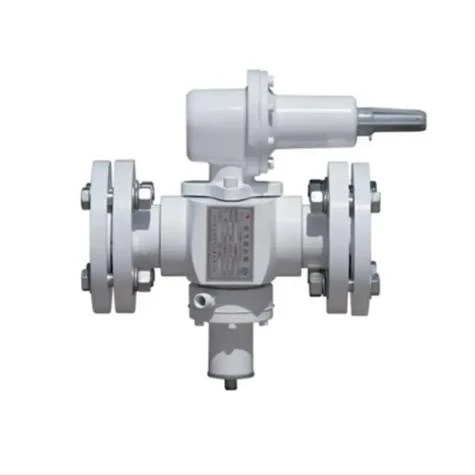
Nov . 07, 2024 13:31
Back to list
Pneumatic Control Valve Applications and Benefits in Industrial Automation Systems
The Role of Pneumatic Control Valves in Modern Industry
Pneumatic control valves play a crucial role in various industrial applications, facilitating the regulation and automation of fluid systems. These valves are designed to control the flow of gases, primarily air, through the use of pressurized systems. Their functionality is essential in settings such as manufacturing plants, chemical processing facilities, and even in air-operated machinery. As industries continue to evolve, understanding the importance and operation of pneumatic control valves becomes vital.
At its core, a pneumatic control valve regulates airflow within a system. By adjusting the position of the valve, operators can control the flow rate, pressure, and direction of the air. The primary components of these valves include the body, actuator, and the control mechanism. When compressed air enters the valve, it actuates a diaphragm or piston that either opens or closes the valve, allowing or restricting airflow as needed. This simple yet effective mechanism forms the backbone of many automated processes.
One of the main advantages of pneumatic control valves is their speed and responsiveness. They can be adjusted rapidly, making them ideal for situations where immediate changes in airflow are required. For instance, in an assembly line, the fast actuation of pneumatic valves can help synchronize the movements of machinery, ensuring smooth operations and minimizing downtime. Additionally, pneumatic systems are typically less expensive to maintain than their hydraulic counterparts, offering a cost-effective solution for businesses.
pneumatic control valve

In terms of applications, pneumatic control valves are incredibly versatile. They are commonly used in applications ranging from automated manufacturing processes to HVAC systems. In the automotive industry, for instance, pneumatic valves are employed in the assembly of vehicles, controlling pneumatic tools that assemble components efficiently. In the food and beverage sector, these valves ensure precise control of air pressure during packaging processes, helping to maintain product quality.
The effectiveness and reliability of pneumatic control valves are also tied to advancements in technology. With the rise of automation and Industry 4.0, many pneumatic systems are now equipped with sensors and smart controls that enable real-time monitoring and diagnostics. This integration allows operators to optimize performance, enhance safety, and predict maintenance needs before they become critical. Such innovations ensure that pneumatic control valves can efficiently meet the demands of modern industrial applications.
Moreover, safety is a significant consideration when using pneumatic control valves. In high-pressure systems, the potential for failure can pose risks to personnel and equipment. Therefore, modern pneumatic valves are designed with safety features, such as pressure relief mechanisms and fail-safe positions, to mitigate these risks. Regular maintenance and inspection of pneumatic control valves are crucial to ensuring operational safety and reliability.
In conclusion, pneumatic control valves are indispensable tools in various industrial applications. Their ability to manage airflow efficiently enhances automation, contributes to cost savings, and improves safety. As technology continues to advance, the importance of these valves only grows, paving the way for more efficient and effective industrial processes. Industries aiming for growth and efficiency should prioritize integrating high-quality pneumatic control valves into their systems, ensuring they remain competitive in an ever-evolving market. Whether in manufacturing, food processing, or any field reliant on fluid dynamics, pneumatic control valves continue to be a cornerstone of operational excellence.
Latest news
-
Safety Valve Spring-Loaded Design Overpressure ProtectionNewsJul.25,2025
-
Precision Voltage Regulator AC5 Accuracy Grade PerformanceNewsJul.25,2025
-
Natural Gas Pressure Regulating Skid Industrial Pipeline ApplicationsNewsJul.25,2025
-
Natural Gas Filter Stainless Steel Mesh Element DesignNewsJul.25,2025
-
Gas Pressure Regulator Valve Direct-Acting Spring-Loaded DesignNewsJul.25,2025
-
Decompression Equipment Multi-Stage Heat Exchange System DesignNewsJul.25,2025

